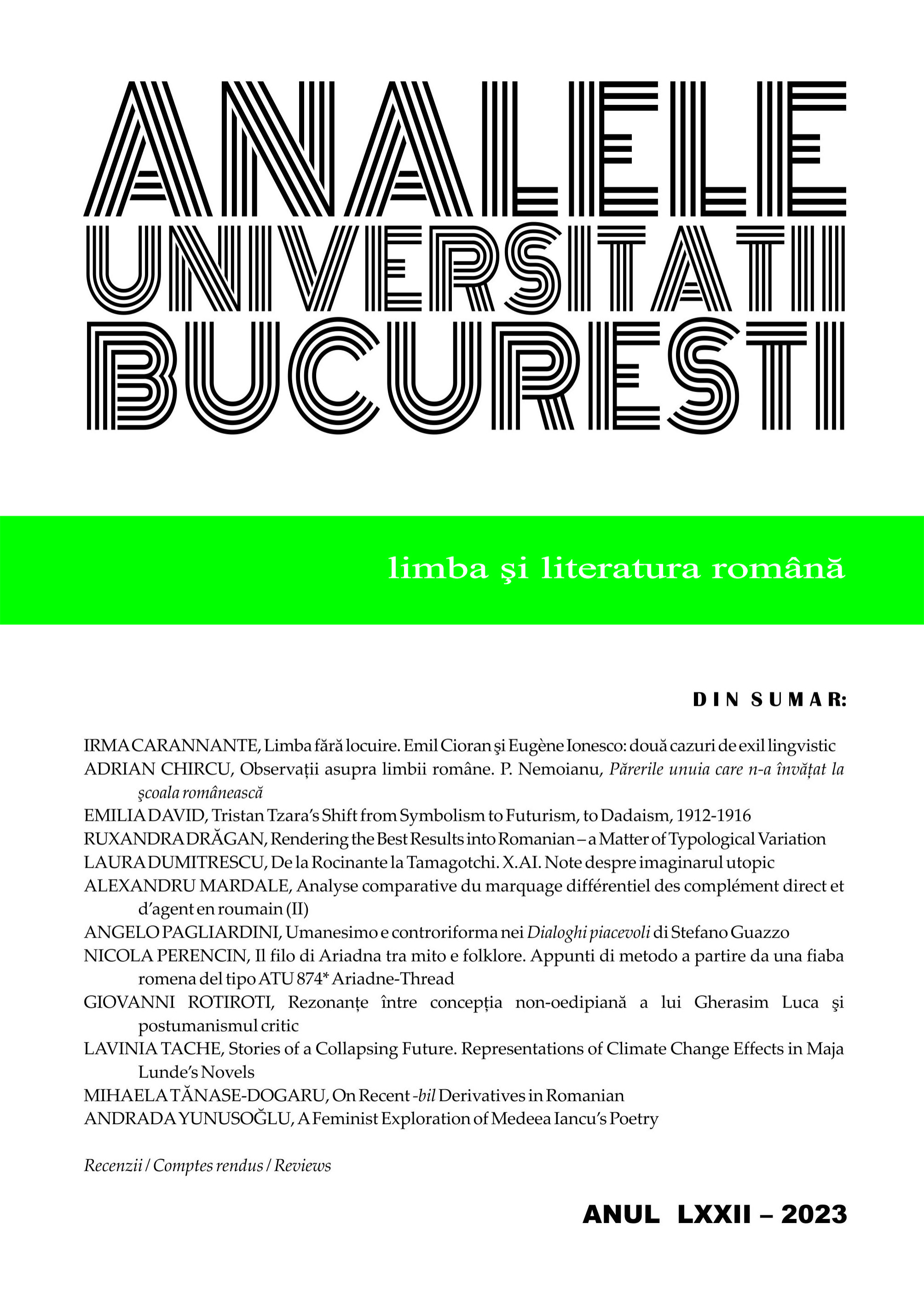Rendering the Best Results into Romanian – a Matter of Typological Variation
Rendering the Best Results into Romanian – a Matter of Typological Variation
Author(s): Ruxandra DrăganSubject(s): Syntax, Lexis, Semantics, Descriptive linguistics, Translation Studies
Published by: Editura Universităţii din Bucureşti
Keywords: resultative construction; Manner; Result; lexicalization patterns; translation strategies;
Summary/Abstract: English (Germanic) and Romanian (Romance) are typologically different in the expression of both change-of-location and change-of-state events (cf. Talmy 1985, 2000). English favours Goal of Motion (GM) and resultative constructions, which combine manner verbs with directional PPs and Result Phrases, respectively; Romanian typically opts for inherently directed motion and change-of-state verbs to achieve the same goals. At the same time, the existing typological differences have been shown to impact both the translation strategies rendering change events, and the syntactic structures they produce (Slobin 2004, 2005, 2006; Capelle 2012; Alonso 2018 et al.). The present article examines the strategies used by professional translators to translate resultatives into Romanian, and the resulting syntactic patterns, shown to be dependent on the type of resultative translated (fake/true). It demonstrates that the mostly compensatory techniques generate structures which, overall, reflect Talmy's lexicalization patterns for Romance and support the uniform treatment of GM and resultatives crosslinguistically. It also argues that the higher syntactic/semantic variation of resultatives (vs. GM) is responsible for the higher number of strategies and patterns translating them.
Journal: Analele Universităţii Bucureşti. Limba şi literatura română
- Issue Year: LXXII/2023
- Issue No: 72
- Page Range: 53-71
- Page Count: 19
- Language: English, Romanian

